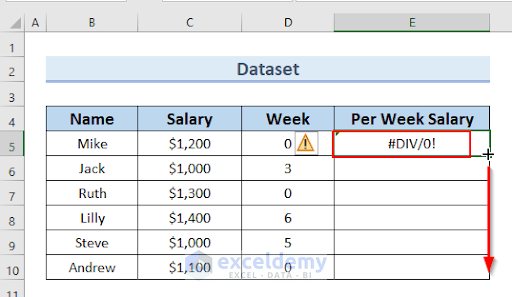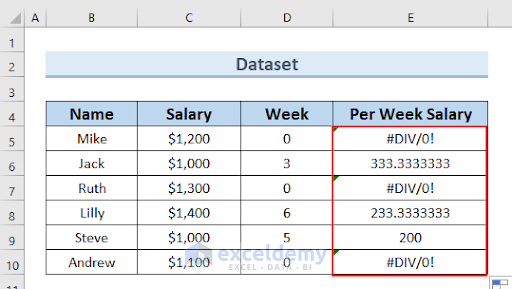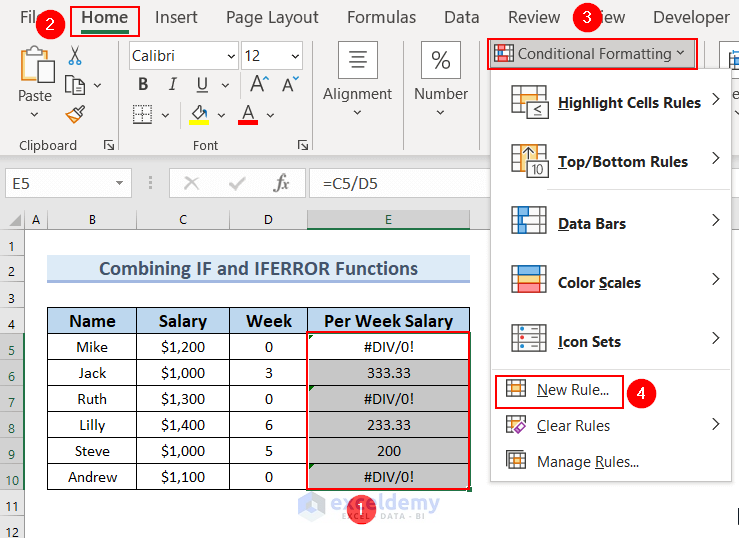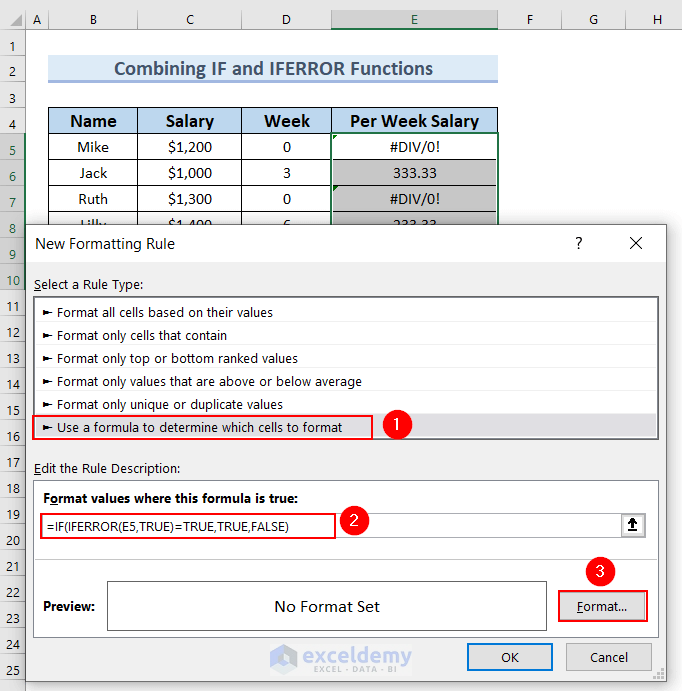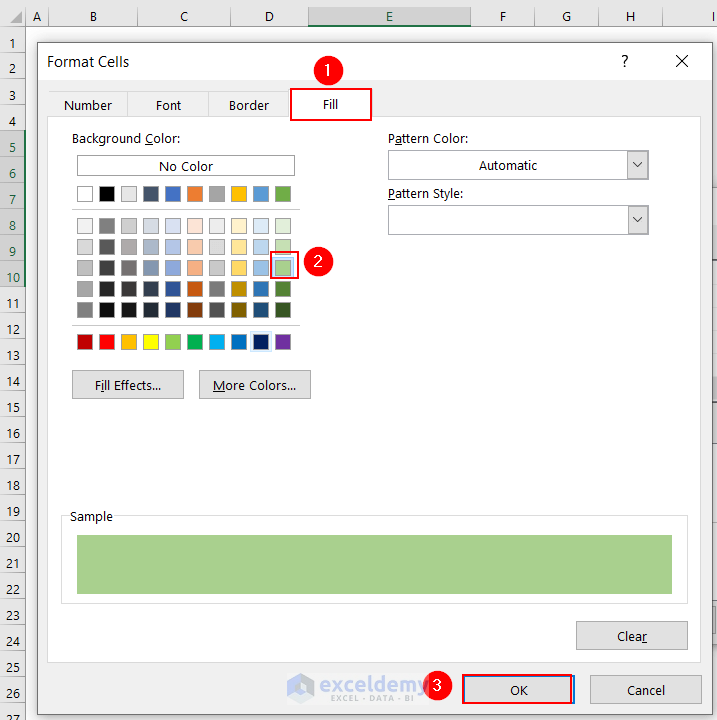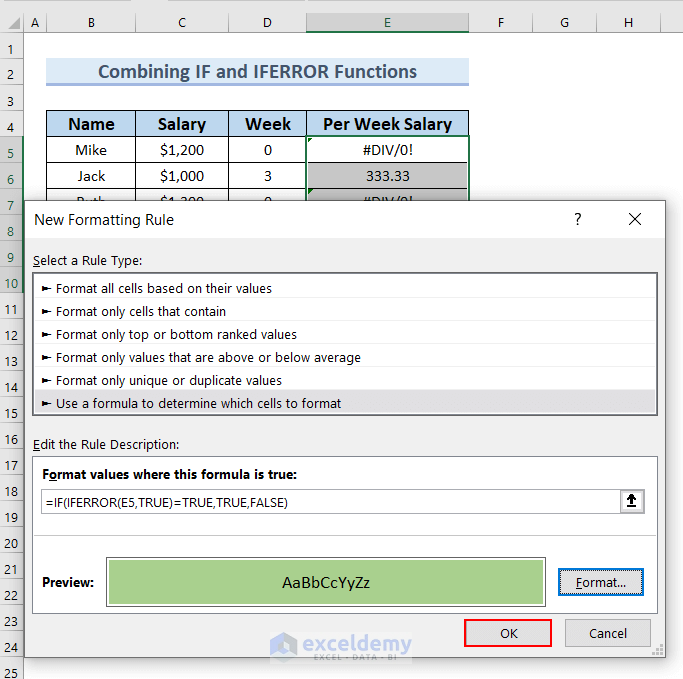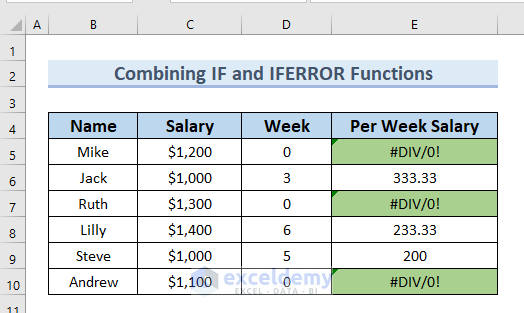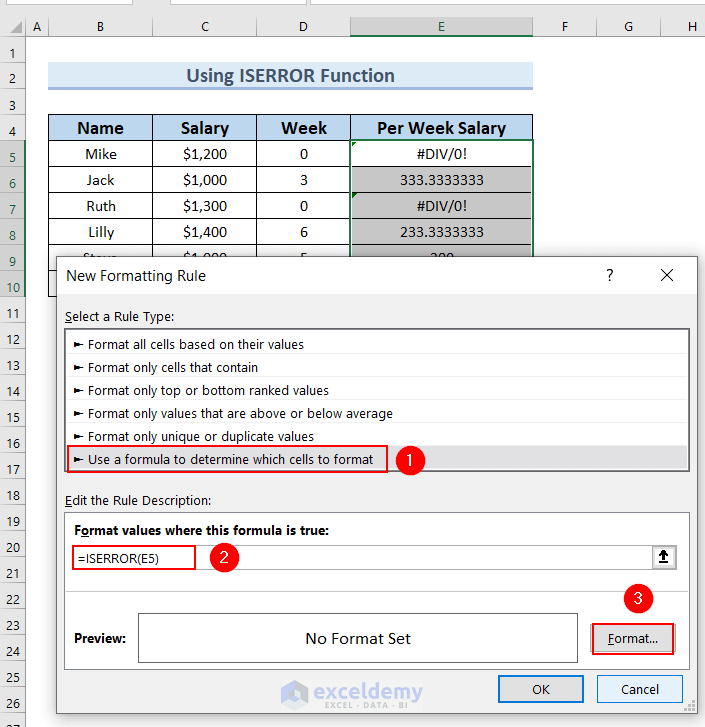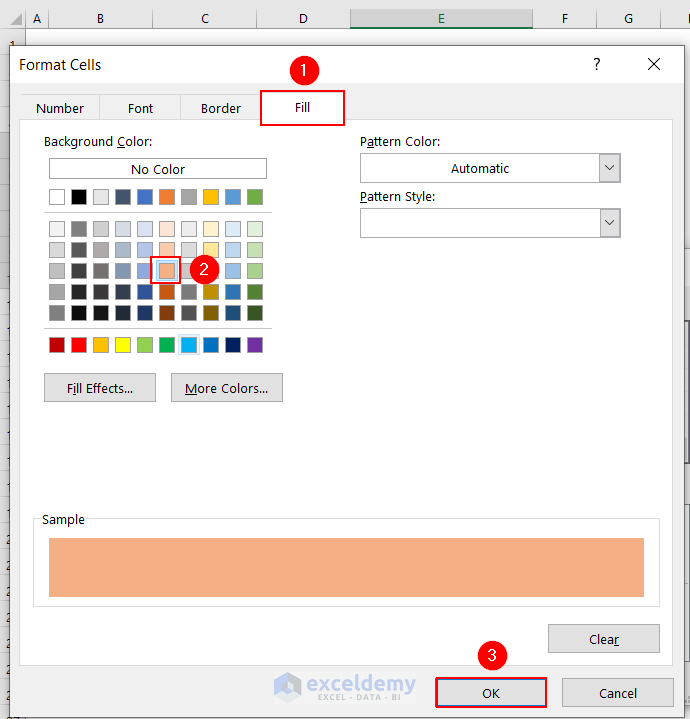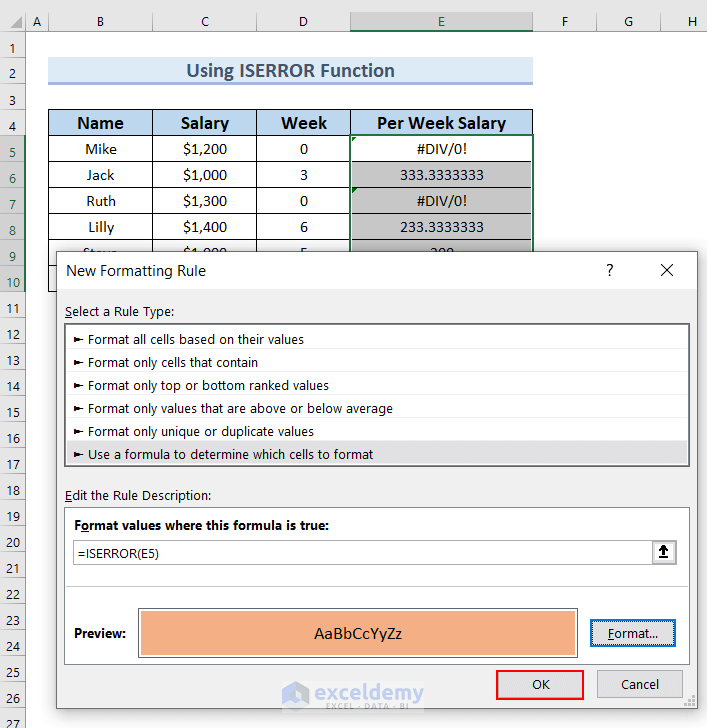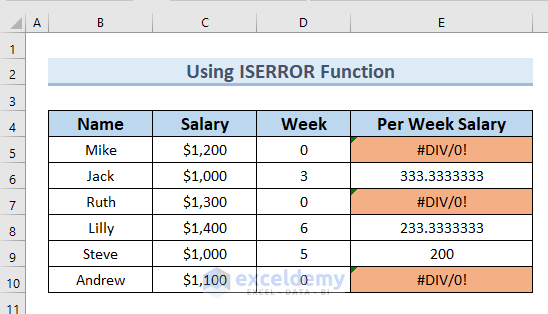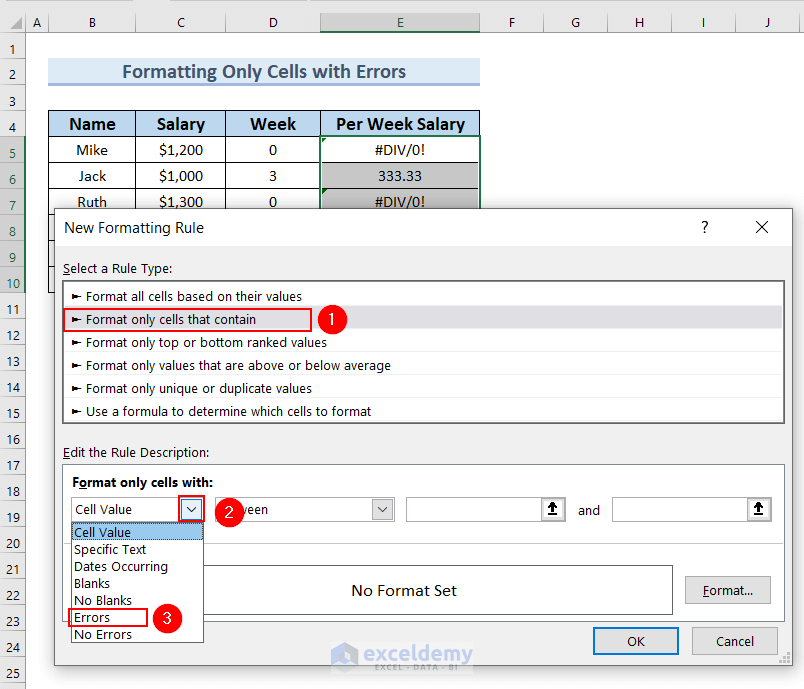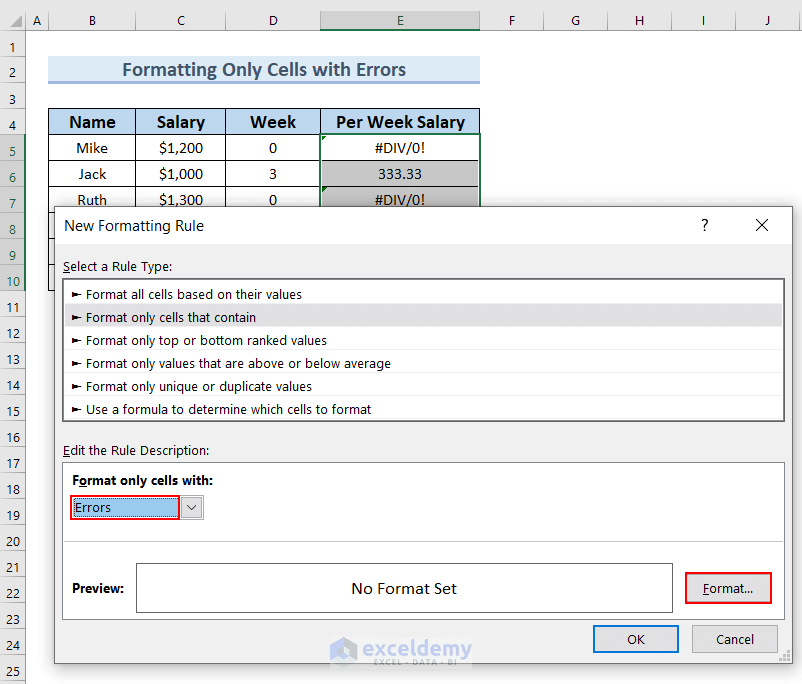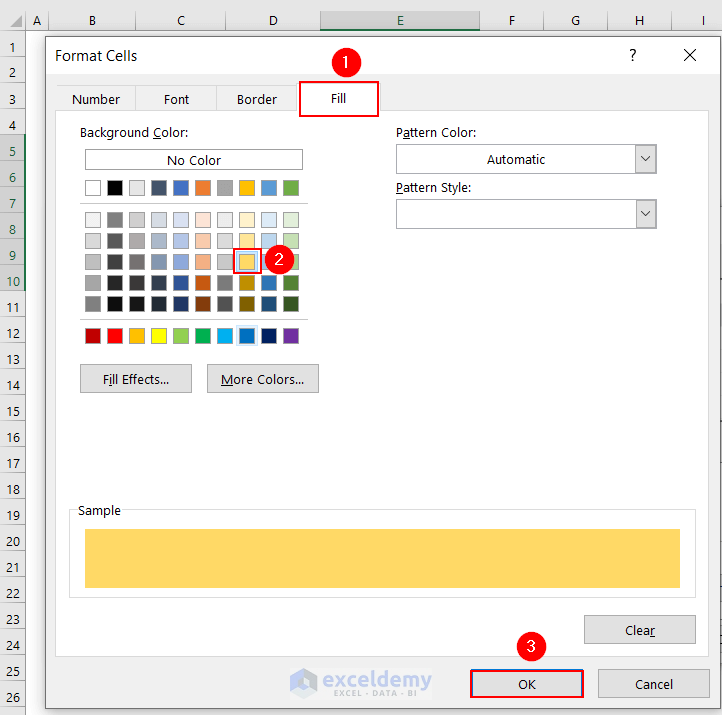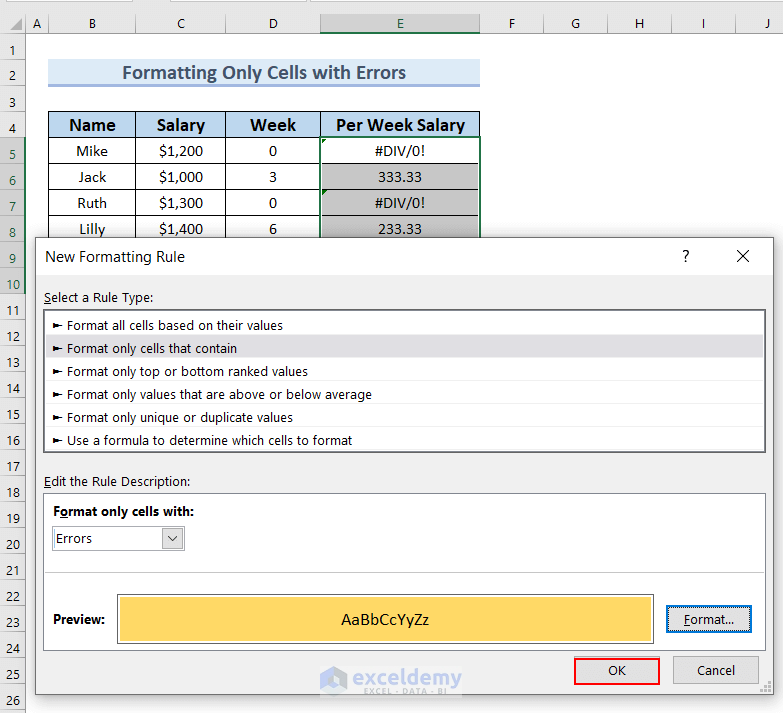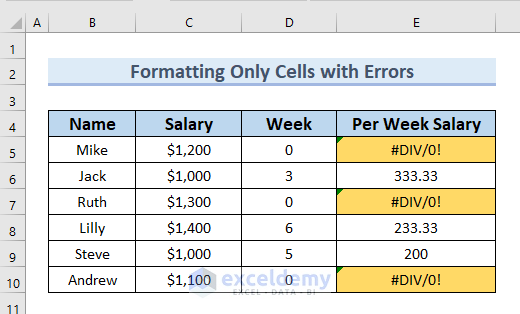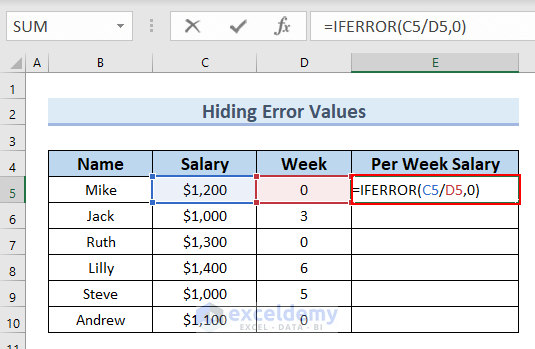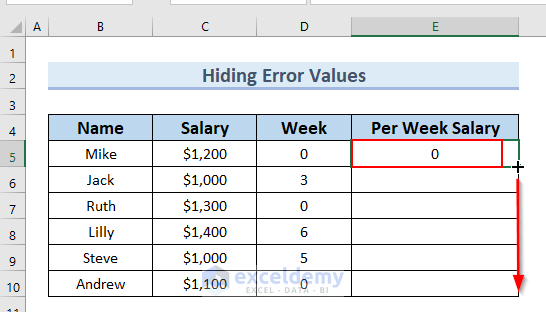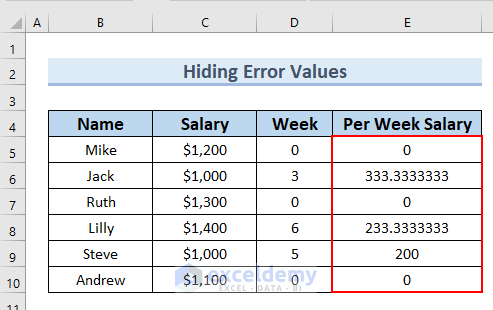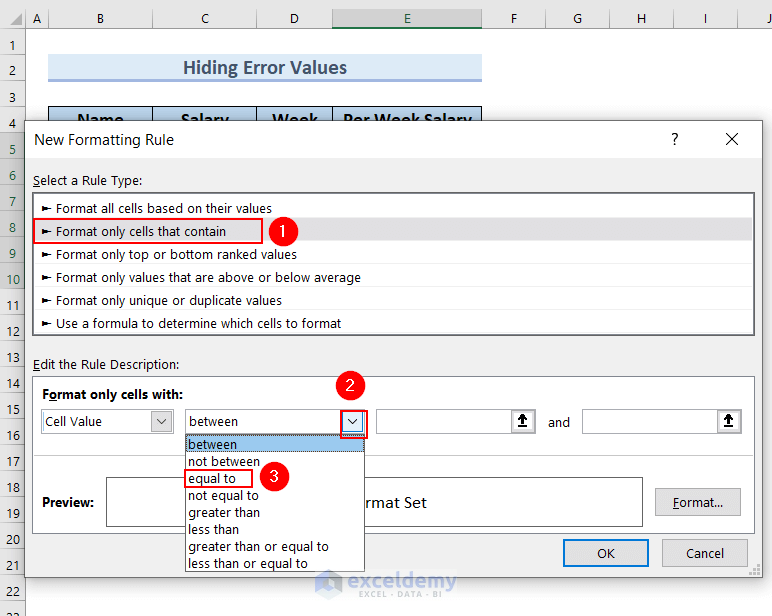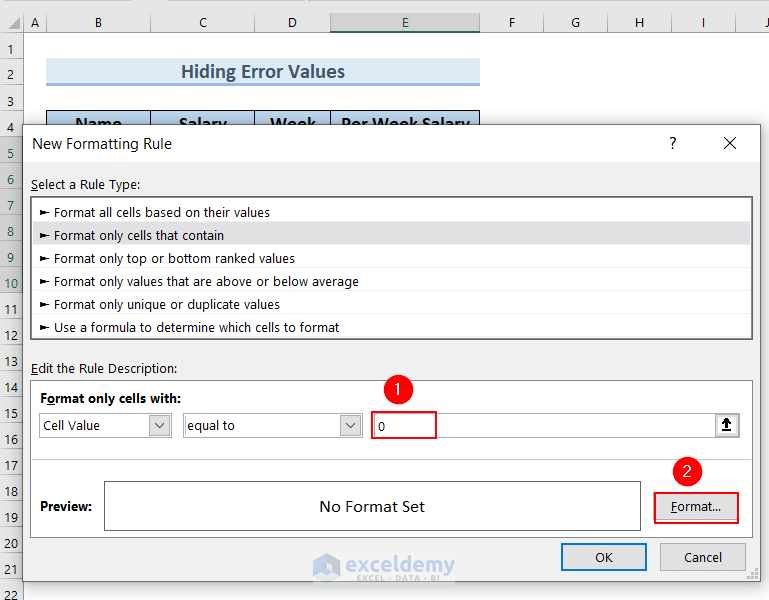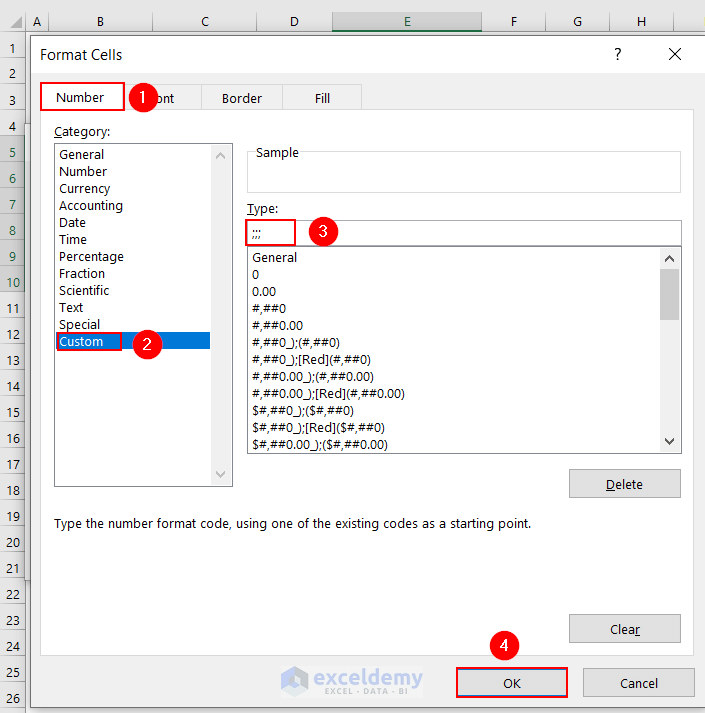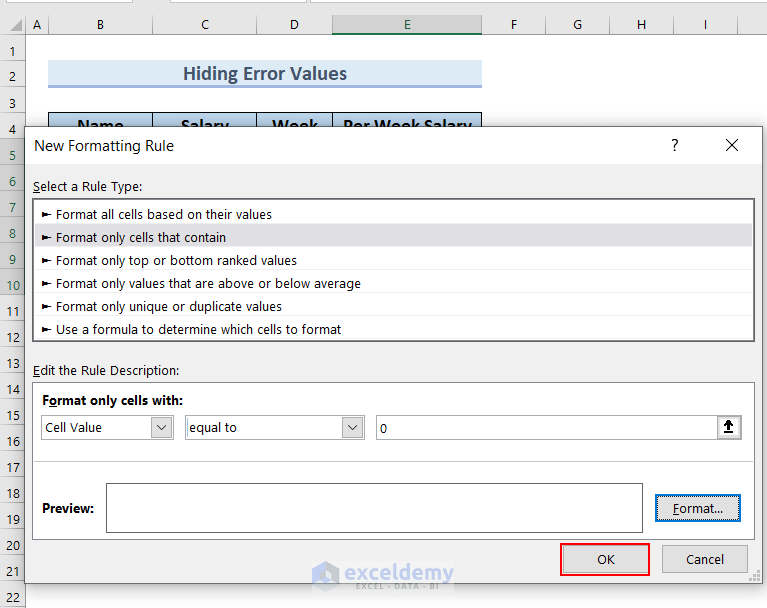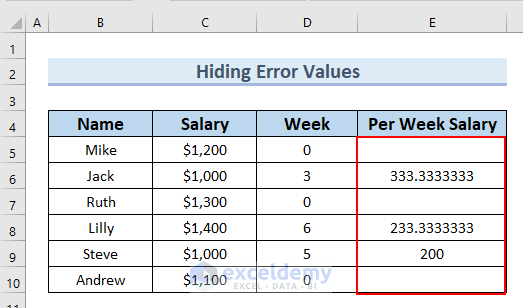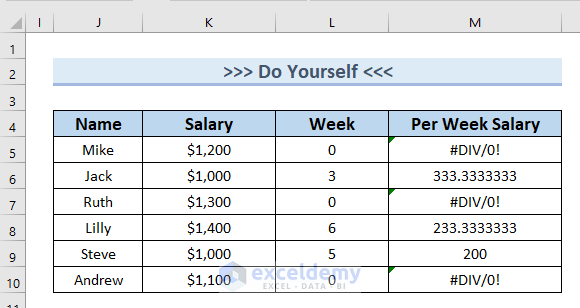The dataset showcases Name, Salary, Week, and Per Week Salary.
To determine per week salary by dividing Salary by Week:
- Use the following formula in E5.
=C5/D5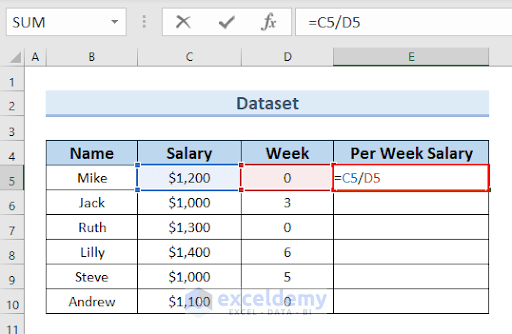
- Press ENTER.
- Since D5 contains 0, the result in E5 result is an error.
- Drag down the formula with the Fill Handle.
- There are several error values in this column.
You can highlight these error values using Conditional Formatting.
Example 1 – Combining the IF and the IFERROR Functions to Highlight Errors
Combine the IF and IFERROR functions.
Steps:
- In the New Formatting Rule dialog box, select Use a formula to determine which cells to format.
- Enter the following formula in Format values where this formula is true.
=IF(IFERROR(E5,TRUE)=TRUE,TRUE,FALSE)- Click Format.
- In Fill >> select a color. Here, light Green.
- You can see the Sample of the selected color.
- Click OK.
- Click OK in the New Formatting Rule dialog box.
- Error values are highlighted in light Green.
Read More: How to Use IF and IFERROR Combined in Excel
Example 2 – Using the ISERROR Function
Use the ISERROR function.
Steps:
- Follow the steps described in Method 1 to display the New Formatting Rule dialog box.
- Select Use a formula to determine which cells to format.
- Enter the following formula in Format values where this formula is true.
=ISERROR(E5)- Click Format.
- In Fill >> select a color. Here, light Pink.
- You can see the Sample of the selected color.
- Click OK.
- Click OK in the New Formatting Rule dialog box.
- Error values are highlighted in light Pink color.
Example 3 – Formatting Cells With Errors Only
Steps:
- Follow the steps described in Method 1 to display the New Formatting Rule dialog box.
- Select Format only cells that contain.
- Click Format only cells with >> select Errors.
- Click Format.
- In Fill group >> select a color. Here, light Yellow.
- You can see the Sample of the selected color.
- Click OK.
- Click OK in the New Formatting Rule dialog box.
- Error values are highlighted in light Yellow.
Read More: How to Use IFERROR with VLOOKUP in Excel
Example 4 – Hiding Error Values by Applying Conditional Formatting
Convert errors to 0 using the IFERROR function, and hide the 0 values.
Steps:
- Enter the following formula in E5.
=IFERROR(C5/D5,0)- The IFERROR function returns 0 when there is an error.
- Press ENTER.
- You can see the result in E5.
- Drag down the formula with the Fill Handle.
- In the Per Week Salary column, 0 replaced error values.
- Hide 0 values.
- Follow steps described in Method 1 to display the New Formatting Rule dialog box.
- Select Format only cells that contain.
- In Format only cells with: enter Cell Value in the first box.
- In the second box, select equal to.
- In the third box, enter 0.
- Click Format.
- In the Format Cells dialog box, in Number >> select Custom.
- Enter: ;;; (three semicolons) in Type.
- Click OK.
- Click OK in the New Formatting Rule dialog box.
- Error values are hidden.
Practice Section
Download the Excel file and practice.
Download Practice Workbook
Download the Excel file here.
Related Articles
- How to SUM with IFERROR in Excel
- How to Use Multiple IFERROR Statements in Excel
- Excel IFERROR Function to Return Blank Instead of 0
<< Go Back to Excel IFERROR Function | Excel Functions | Learn Excel
Get FREE Advanced Excel Exercises with Solutions!